
A big band or jazz orchestra is a type of musical ensemble of jazz music that usually consists of ten or more musicians with four sections: saxophones, trumpets, trombones, and a rhythm section. Big bands originated during the early 1910s and dominated jazz in the early 1940s when swing was most popular. The term "big band" is also used to describe a genre of music, although this was not the only style of music played by big bands.

William James "Count" Basie was an African-American jazz pianist, organist, bandleader, and composer. In 1935, he formed the Count Basie Orchestra, and in 1936 took them to Chicago for a long engagement and their first recording. He led the group for almost 50 years, creating innovations like the use of two "split" tenor saxophones, emphasizing the rhythm section, riffing with a big band, using arrangers to broaden their sound, and others. Many musicians came to prominence under his direction, including the tenor saxophonists Lester Young and Herschel Evans, the guitarist Freddie Green, trumpeters Buck Clayton and Harry "Sweets" Edison, plunger trombonist Al Grey, and singers Jimmy Rushing, Helen Humes, Thelma Carpenter, and Joe Williams.
Swing music is a style of jazz that developed in the United States during the late 1920s and early 1930s. It became nationally popular from the mid-1930s. The name derived from its emphasis on the off-beat, or nominally weaker beat. Swing bands usually featured soloists who would improvise on the melody over the arrangement. The danceable swing style of big bands and bandleaders such as Benny Goodman was the dominant form of American popular music from 1935 to 1946, known as the swing era. The verb "to swing" is also used as a term of praise for playing that has a strong groove or drive. Musicians of the swing era include Duke Ellington, Benny Goodman, Count Basie, Cab Calloway, Jimmy Dorsey, Tommy Dorsey, Woody Herman, Harry James, Lionel Hampton, Glenn Miller, Artie Shaw and Django Reinhardt.
Mark-Anthony Turnage CBE is a British composer of classical music.

Robert Edward "Bob" Brookmeyer was an American jazz valve trombonist, pianist, arranger, and composer. Born in Kansas City, Missouri, Brookmeyer first gained widespread public attention as a member of Gerry Mulligan's quartet from 1954 to 1957. He later worked with Jimmy Giuffre, before rejoining Mulligan's Concert Jazz Band. He garnered 8 Grammy Award nominations during his lifetime.

Neal Paul Hefti was an American jazz trumpeter, composer, and arranger. He wrote music for The Odd Couple movie and TV series and for the Batman TV series.
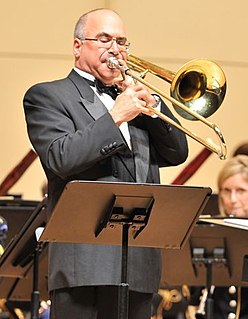
Joseph Norman Alessi is an American classical trombonist with the New York Philharmonic.
The swing era was the period (1933–1947) when big band swing music was the most popular music in the United States. Though this was its most popular period, the music had actually been around since the late 1920s and early 1930s, being played by black bands led by such artists as Duke Ellington, Jimmie Lunceford, Bennie Moten, Cab Calloway, Earl Hines, and Fletcher Henderson, and white bands from the 1920s led by the likes of Jean Goldkette, Russ Morgan and Isham Jones. An early milestone in the era was from "the King of Swing" Benny Goodman's performance at the Palomar Ballroom in Los Angeles on August 21, 1935, bringing the music to the rest of the country. The 1930s also became the era of other great soloists: the tenor saxophonists Coleman Hawkins, Ben Webster and Lester Young; the alto saxophonists Benny Carter and Johnny Hodges; the drummers Chick Webb, Gene Krupa, Jo Jones and Sid Catlett; the pianists Fats Waller and Teddy Wilson; the trumpeters Louis Armstrong, Roy Eldridge, Bunny Berigan, and Rex Stewart.

Eugene Edward "Snooky" Young was an American jazz trumpeter. He was known for his mastery of the plunger mute, with which he was able to create a wide range of sounds.
"April in Paris" is a popular song composed by Vernon Duke with lyrics by Yip Harburg in 1932 for the Broadway musical Walk a Little Faster. The original 1933 hit was performed by Freddy Martin, and the 1952 remake was by the Sauter-Finegan Orchestra, whose version made the Cashbox Top 50. Composer Alec Wilder writes, "There are no two ways about it: this is a perfect theater song. If that sounds too reverent, then I'll reduce the praise to 'perfectly wonderful,' or else say that if it's not perfect, show me why it isn't."

The Count Basie Orchestra is a 16 to 18 piece big band, one of the most prominent jazz performing groups of the swing era, founded by Count Basie in 1935 and recording regularly from 1936. Despite a brief disbandment at the beginning of the 1950s, the band survived long past the Big Band era itself and the death of Basie in 1984. It continues under the direction of trumpeter Scotty Barnhart.
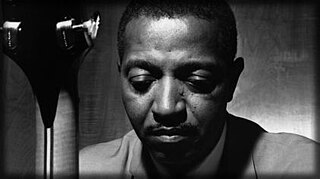
Frederick William Green was an American swing jazz guitarist who played rhythm guitar with the Count Basie Orchestra for almost fifty years.
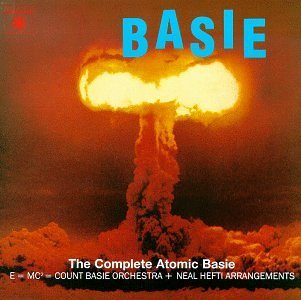
The Atomic Mr. Basie (originally called Basie, also known as E=MC2 and reissued in 1994 as The Complete Atomic Basie) is a 1958 album by Count Basie and his orchestra. Allmusic gave it 5 stars, reviewer Bruce Eder saying: "it took Basie's core audience and a lot of other people by surprise, as a bold, forward-looking statement within the context of a big-band recording." It is included in the book 1001 Albums You Must Hear Before You Die, Will Fulford-Jones calling it "Basie's last great record." It was voted number 411 in the third edition of Colin Larkin's All Time Top 1000 Albums (2000). According to Acclaimed Music, it is the 6th most critically acclaimed album of 1958, the 25th most acclaimed of the 1950s, and the 837th most acclaimed of all time, based on an aggregation of hundreds of critics' lists from around the world.

Loose Tubes were a British jazz big band/orchestra active during the mid-to-late 1980s. Critically and popularly acclaimed, the band was considered to be the focal point of a 1980s renaissance in British jazz. It was the main launchpad for the careers of many future leading British jazz players including Django Bates, Iain Ballamy, Eddie Parker, Julian and Steve Argüelles, Mark Lockheart, Steve Berry, Tim Whitehead, Ashley Slater. In 2015, the band reformed to celebrate the 30th anniversary of the band's formation, with concerts at the Cheltenham Jazz Festival, Brecon Jazz Festival and a sold out week at Ronnie Scott's.
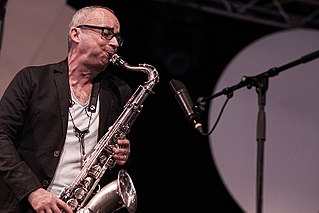
Julian Argüelles is an English jazz saxophonist.
Benny Powell was an American jazz trombonist. He played both standard (tenor) trombone and bass trombone.
William Henry Hughes was an American jazz trombonist and bandleader. He spent most of his career with the Count Basie Orchestra and was the director of that ensemble until September 2010.

Ellington '55 is an album by American pianist, composer and bandleader Duke Ellington recorded for the Capitol label in 1953 and 1954 and released in 1955. The album features the Ellington Orchestra's performances of popular big band compositions and was reissued on CD with two bonus tracks in 1999.
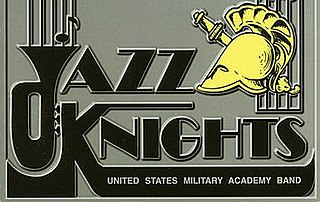
The Jazz Knights was the jazz ensemble of the United States Military Academy Band stationed at West Point, New York; it was one of the premiere jazz ensembles of the United States Army Special Bands. Originally created in 1972, they carried the tradition of American Jazz and entertain the Corps of Cadets, the “JK's” were a professional big band rehearsing for the purpose of presenting jazz ensemble music. The ensemble's mission was to serve the United States Military Academy and the American public.
The West Australian Youth Jazz Orchestra (WAYJO) is an Australian youth jazz orchestra based in Perth, Western Australia. WAYJO has 54 jazz musicians between 14 and 25 years of age and currently presents over 55 performances a year across Australia.













